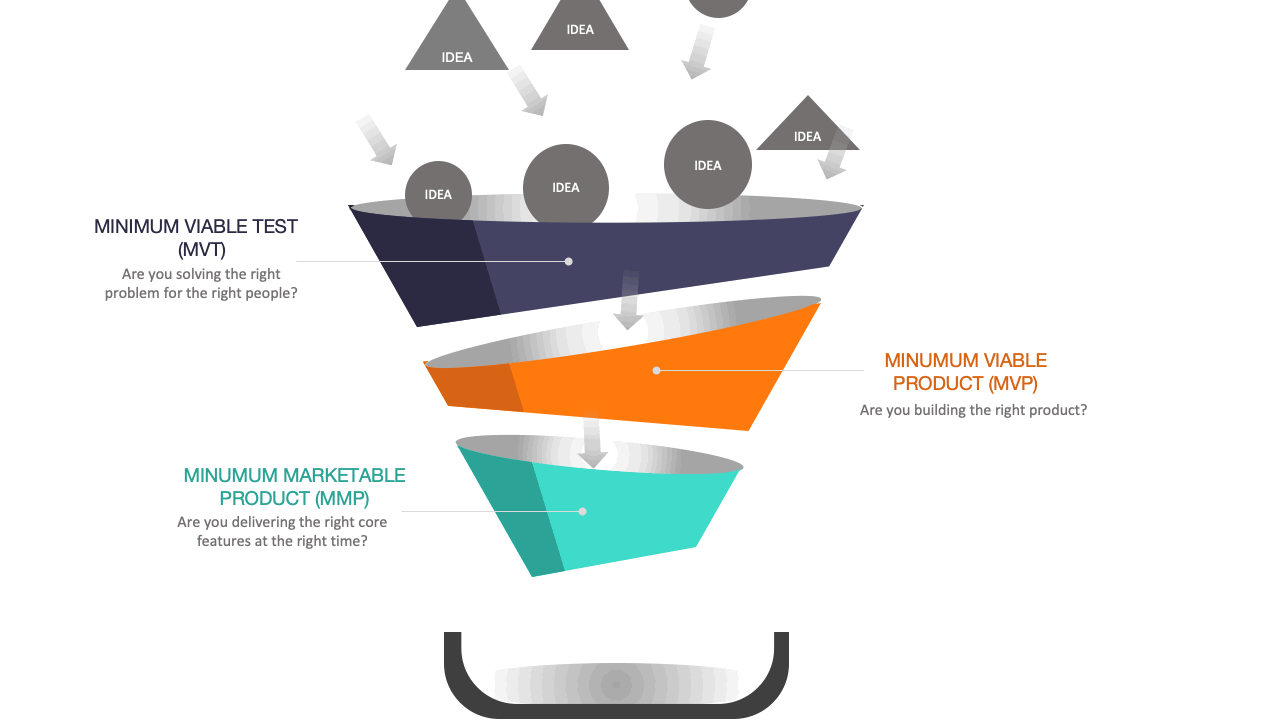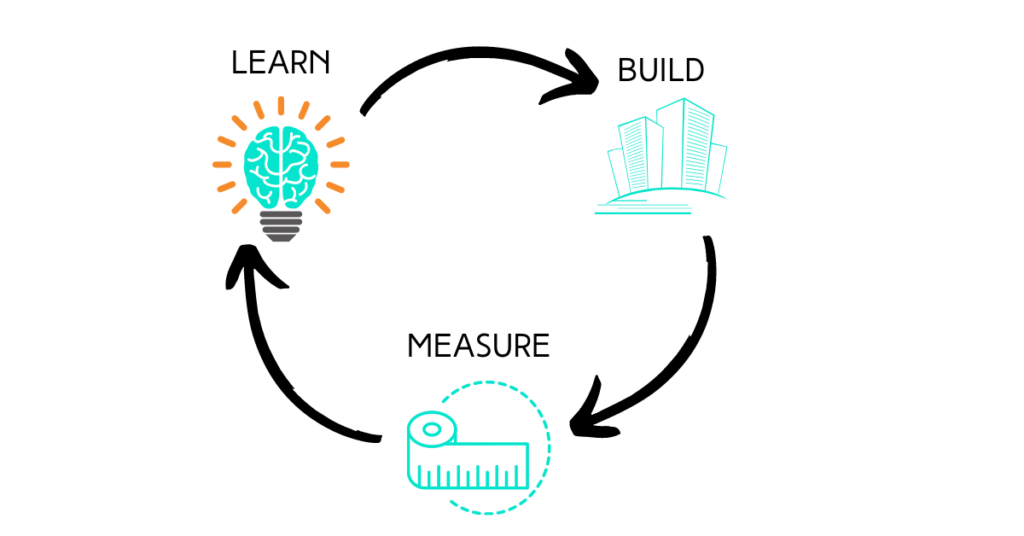Episode Summary

On the podcast today, Josh and I discuss the Product Validation Funnel, a term we coined here at CIL. It is a method of building software, a way to discover where clients are in their process and help them to the next part of the funnel.
Product validation is inherent to how we build software, it guides us to help clients make the best decisions not only about their product but about their business. We want to help them (and you!) avoid costly mistakes and build something no one uses. Software should be a perfect solution to the product you’re solving, and YOUR customer should be delighted when they use it. How do you do that? Well, with the Product Validation Funnel, of course.
What else can you tell me about Product Validation?
Why is Using a Lean Startup Methodology Important?
5 Ways to Apply Lean Startup
Why We Created a Validation Process – the origin story
What is an MVP?
There’s a lot more to read, listen to, etc at this link!
Full Transcript
Erin Srebinski: [00:00:18] Today we are talking about Product Validation Funnel. Josh, why don’t you tell us what the Product Validation Funnel is?
Josh Barker: [00:00:25] Absolutely. We developed the Product Validation Funnel because it really is our key differentiator in the marketplace.
And we want to kind of give people that secret sauce, you know, we want to give back and we want to say, this is how you should build software. These were key learnings from being out in Silicon Valley and working with a ton of smarter people than myself, and being able to take all that information and package it together.
And we created the Product Validation Funnel. So that’s a little bit of the history behind it. The Product Validation Funnel, what it is in a simple form, is all products go through this funnel, whether or not you acknowledge it they go through this funnel. So there are a couple of different stages within the funnel.
So if you envision a funnel and at the top of the funnel, the broader side, you’ve got an MVT: Minimum Viable Tests. And then down the funnel a little further, you’ve got Minimum Viable Product. And then down at the bottom, you have a Minimum Marketable Product. So each of these stages, all products go through this.
The biggest mistake that companies make when they’re developing products is they go through this funnel too quickly. They’ll skip over steps. They’ll go down right to the bottom. Normally, that’s the biggest problem, they’ll go right through the funnel to the MMP and they’ll say, what do we need to build?
What we do is encourage people to go and think through it a lot more systematically. Make sure you go from MVT to MVP, to MMP. A lot of abbreviations. The thought is, is when you go from the top, it’s reducing your risk the further you get down the funnel if you take the time to appropriately go through each stage.
And so that’s what we really try and do. Each part of that funnel is reducing risk and giving an example at the top of the funnel, the minimum viable test that’s simply doing market tests, lean startup calls it experimentation. Doing experiments to prove whether or not your idea, your product idea will actually have legs in the market. So do that before you do anything. And that means hardly any engineering. Quick and rapid. An example of this that I give all the time, as you know, is Dropbox. Right? What Dropbox did instead of going out and building the thing and going through the funnel too quickly, they said, “We’re going to build a two-minute explainer video, send that out, and see what kind of traction this gets in terms of pre-sign ups.”
And of course, the rest is history where they got tons of pre-sign ups. And so a lot of Silicon Valley principles up here of rapid experimentation and lean startup. We try and apply that to all of our projects. So you’re not getting down to the funnel and wasting tremendous amounts of software engineering costs. When really you could have stopped at the top and said, “Hey, we tested this out in the marketplace and it really did doesn’t work”.
Erin Srebinski: [00:03:09] Yeah. So once they do that, the next stage is MVP.
Josh Barker: [00:03:14] Yup. MVP after that. And so all of the learnings we learned out of that MVT stage, we apply to the MVP stage. What we’ll do is we’ll sit down and through these rapid experimentations what we can do is we can actually determine who best is the target market? What’s the value proposition? If you imagine like a Business Model Canvas, we kind of go through that canvas and try and reduce the number of assumptions we’re making through these experiments and the MVT stage.
Then when we get down to the MVP stage, we have a fairly clear idea of how to create some wireframes and some quick, rapid prototypes so that we can actually get it in the hands of potential users of it and get feedback. And we’ll iterate on that feedback, just continuing to wireframe and rapidly prototype.
So still very little engineering effort. And we do that so that we can add a further validation step. So that the folks that we’re marketing to are equally giving us this feedback and getting excited. Honestly, they’re getting excited about it and saying, “Oh my gosh, this will solve my problems so much.”
And so that is the MVT, and then the MVP stages. And then you want me to go through and talk about the MMP stage to the bottom?
Erin Srebinski: [00:04:21] Absolutely.
Josh Barker: [00:04:23] I mean, it’s kind of an obvious progression of you doing rapid experimentation, doing a quick and rapid prototype. Well, now you pretty much have the validation and the blueprint to know exactly what to build.
And when we say MMP, the caveat here is a lot of people get caught up, not only going through the funnel too quickly but also in that MVP stage, it’s critical that we validate what is the Minimum Viable Product. In other words, what is the minimum amount of value you can package up for your target audience and ship that out to them, to where they would actually want to download it and use it? Too many people add on bells and whistles, of developing this huge scaling app. When it’s like, no start really small. You can get to market faster, you can get people using it.
And at that bottom stage, you actually develop the software, but it’s a very slimmed-down product. So Minimum Marketable Product. There are increasing costs as you go through the funnel, but if you do it right, you’re going to reduce your risk substantially and build the right thing.
Erin Srebinski: [00:05:23] Right. Because you’re taking the most risk at the beginning when you’re not spending that much money. You’re essentially narrowing your scope all the way down at the bottom so that you have a very clear idea of what to do. So you’re not just doing something and spending a ton of money. That’s the benefit.
Josh Barker: [00:05:36] That’s the benefit. Exactly.
Erin Srebinski: [00:05:37] This is kind of also similar to the build measure, learn cycle, right? You’re learning along the way, you’re getting input. So is there a difference or you just going through the build measure, learn, cycle in each step?

Josh Barker: [00:05:48] That. You’re exactly right. So it’s that where you’re going through build, measure, learn through every part of the funnel.
It’s a perfect convergence and one doesn’t negate the other, they work really well in complement. An example of this is at the top of the MVT stage, if you run a rapid experiment, oftentimes you’ll find out, which is just as valuable, you’ll find out what doesn’t work. So then you’ll tweak your experiment and then you’ll say, “Well, would this work instead?” You kind of build, measure, learn, right? Send it out to the market, get the feedback and say that didn’t work, what did we learn out of this and what can we keep doing to iterate on that build, measure, learn cycle?
Erin Srebinski: [00:06:25] That makes sense. So you’re taking this funnel and you’re analyzing it, you’re getting data, you’re getting feedback, you’re getting customer input, and all of that equals out to one final thing.
Josh Barker: [00:06:35] Yes.
Erin Srebinski: [00:06:35] That’s essentially the goal. What are the benefits of doing it this way? You mentioned saving money is one, you’re building the right thing, which is obviously pretty important. You’re testing it with your consumers, so you already know how they feel about it. If they like it, what they do and don’t like, what features you need. Is there anything else or did I just take it all right there?
Josh Barker: [00:06:55] You nailed on all of them, mostly. I mean, that’s a very good synopsis of the benefits of it. Far, too often it prevents someone from having an idea, whether it’s a singular person, like an entrepreneur, or someone within a large enterprise business or a team of board members saying this is a good idea. Oftentimes they have the best of intentions. Right? And they have, somewhat of a pulse on the market. It’s not to say their assumptions are wrong. It’s just to say, let’s take a little bit more scientific approach validating and refining a concept that someone might have.
When we’re approached oftentimes we’ll help them rewind a little bit and say, well, wait a minute, let’s make sure you validated this before we move forward.
I think that the value proposition could be summed up by saying what would happen if you spent a quarter million to half a million to over a million dollars, but you ended up building the wrong thing that no one actually wants to use?



